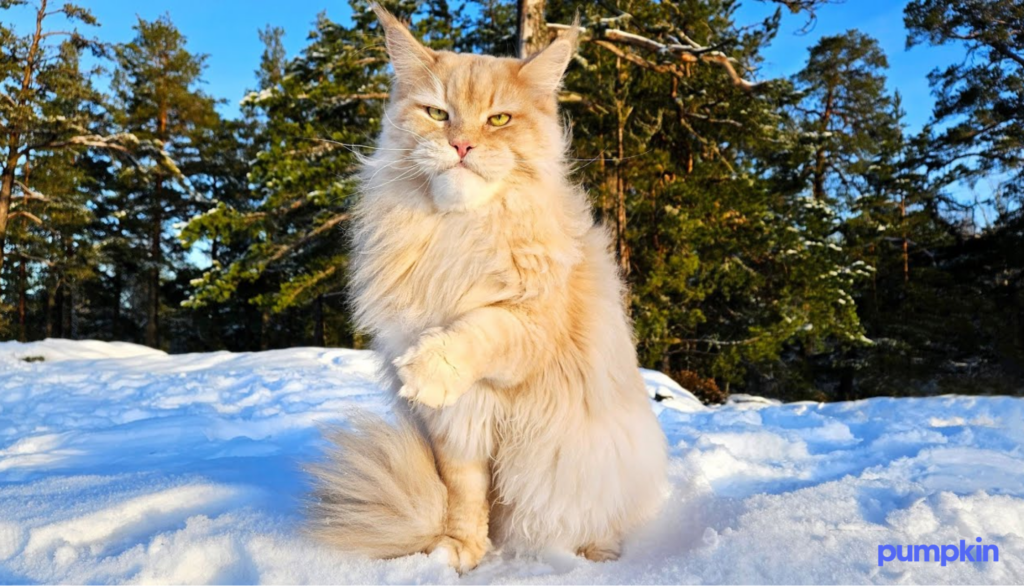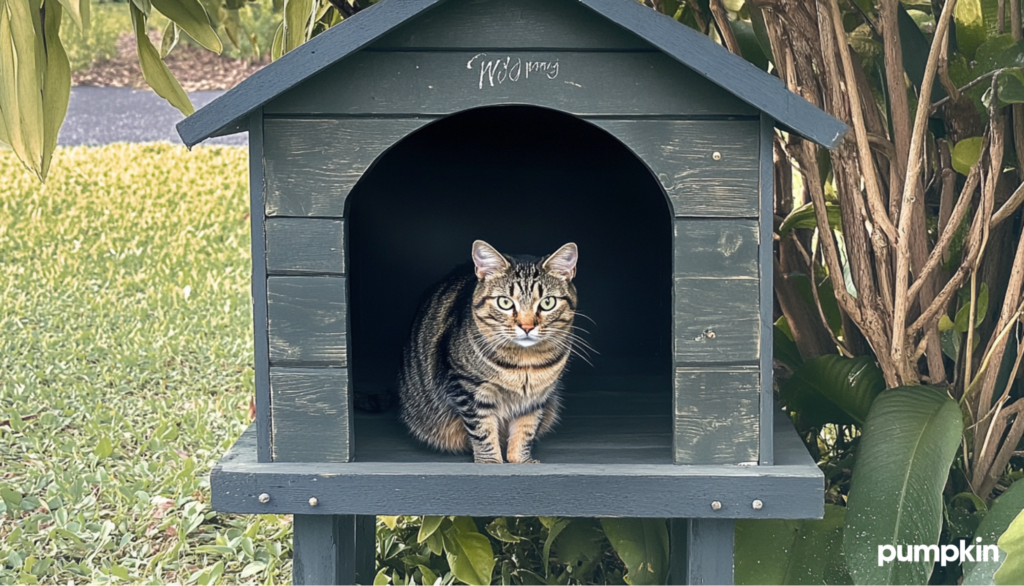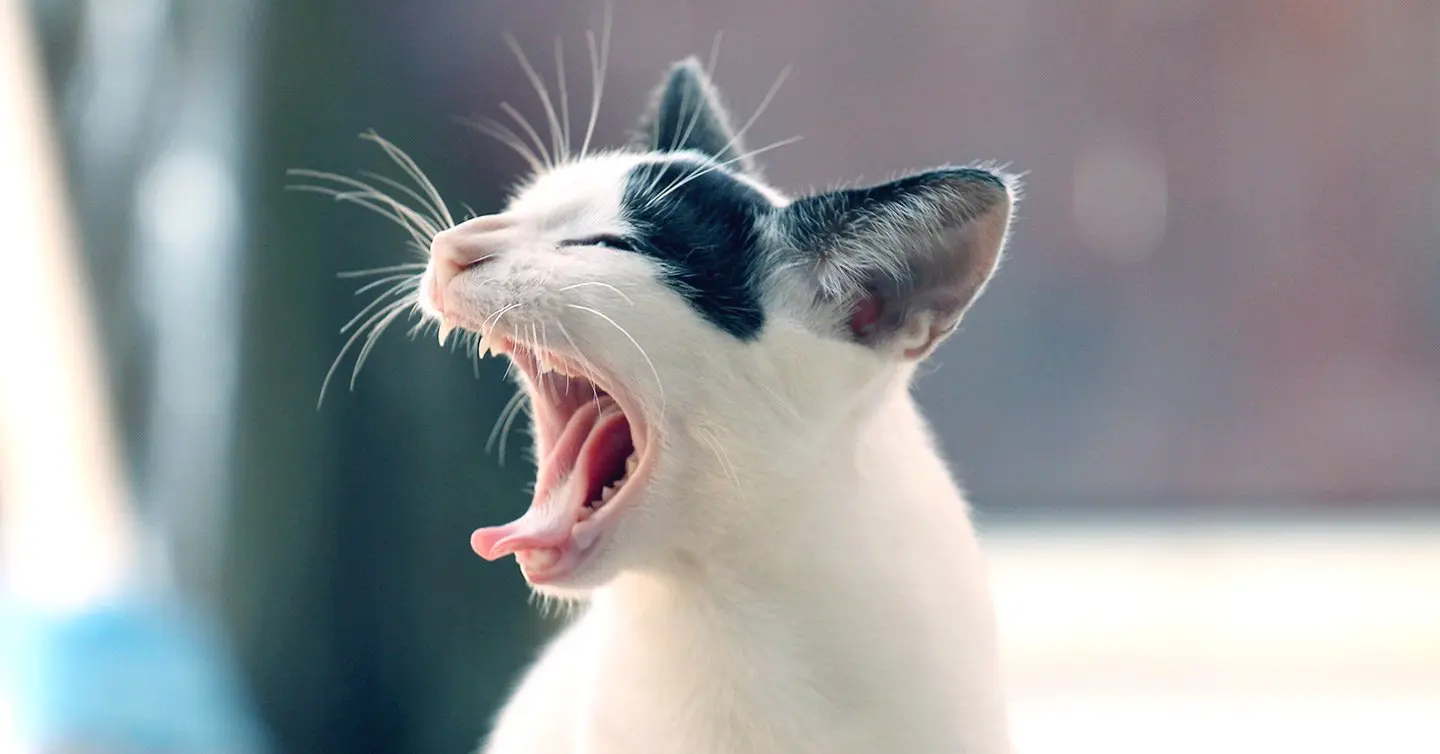Key Points
- Cats do get cold, even with their fur coats. Age, health, and breed influence their cold tolerance.
- Signs like shivering, seeking heat sources, and cold extremities indicate that a cat is too cold. If left unaddressed, this can lead to hypothermia, frostbite, and death.
- If you’re caring for outdoor cats or strays, you can provide a warm shelter, food, and water to try and help them get through the winter safely.
Winter is coming, and while you’re busy bundling up in scarves and sweaters, you see your kitty napping atop a heating vent. This adorable sight might make you wonder: Do cats get cold? Despite literally wearing a built-in fur coat, cats can get cold during the winter, even inside the house.
Whether you’re caring for an indoor or outdoor cat, recognizing the signs of a chilly kitty and learning how to keep them warm makes all the difference in their winter experience.
So, before you try to outfit your kitty in a cute sweater they’re sure to hate, learn about this important aspect of winter pet safety.
How cold is too cold for cats?
A cat’s comfort is closely tied to temperature. Just like you, cats are warm-blooded, meaning they need to maintain a stable body temperature to function. According to veterinarian Sarah J. Wooten, DVM, CVJ, a cat’s ideal body temperature is 99-102 degrees Fahrenheit (or 38-39 degrees Celsius). If their temperature drops below their comfort level, they’ll get chilly.
When a cat gets cold depends on their breed, coat, age, and health condition. But generally, 45 degrees Fahrenheit and below is too cold for cats for extended periods of time, especially if there’s also rain and wind.
Kittens, senior cats, or underweight cats are more sensitive to the cold because they have a smaller body mass and a thinner coat. It’s harder for them to generate and retain body heat.
How does a cat’s coat keep them warm?
You know that puffy coat you always break out for winter? Well, cats have their own version, which is made up of two types of hair: guard hairs and the undercoat.
Guard hairs are the longer, coarse hairs that protect against the elements; the undercoat is softer and denser, providing insulation. These two layers trap warm air and keep the cat warm.
During the colder months, cats also rely on piloerection — known as goosebumps in humans, this occurs when hair stands on end — to fluff up their fur to increase the insulation layer. A bit fancier than your coat, huh?
Breeds made for the cold
Certain breeds originate from cold places and naturally adapt to cold weather. Often, they share a dense fur coat to protect them from the cold. Some breeds even have water-resistant fur that not only withstands the cold but also keeps them dry in wet and snowy conditions.
Here are a few extra-fluffy cat breeds that were bred for cold-weather tolerance:
- Maine Coon: Thick, water-resistant fur
- Norwegian Forest cat: Dense, double-layered coat
- Russian Blue: Dense, plush double coat
- Siberian: Long, triple-layered coat that protects from harsh weather
But even cold-weather cat breeds have limits. No cat should be left outside in extreme cold for extended periods.

How to tell if a cat is too cold
While cats can’t exactly tell us when they’re feeling cold, here are some body language signs to watch out for:
- Curled up in a ball
- Snuggling up against a heat source
- Shivering
- Cold extremities
- Lethargy or sleeping more
So, can a cat survive outside in winter? While some cats survive by seeking shelter, it’s dangerous for cats to be out in the cold for extended periods.
Hypothermia in cats
When a cat’s body temperature drops below normal, they can suffer from hypothermia. This happens when a cat is exposed to cold weather for a long time, especially in wet and windy conditions.
Hypothermia disrupts the bodily functions of a cat, affecting the heart, respiratory system, and even brain activity. It can lead to death if it’s not treated promptly.
Kittens, senior cats, and cats with diabetes, heart disease, and kidney disease are more susceptible to hypothermia. These conditions may make them less tolerant to cold weather.
Signs of hypothermia
Recognizing the signs of hypothermia can help you save a cat’s life, be it your cat or a community cat.
Keep an eye out for these signs:
- Early signs: Cold skin, cold extremities, shivering, lethargy
- Worsening signs: Difficulty breathing, pale gums, dilated pupils, muscle stiffness
- Critical signs: Loss of consciousness, lack of responsiveness
Hypothermia can progress fast, so if your kitty displays these symptoms, don’t wait for their condition to get worse.
How to treat hypothermia in cats
If you have the slightest inkling that your cat is hypothermic, act quickly to warm them up. Early action often determines the outcome of hypothermia.
In mild cases, you can move the cat to a warmer place or wrap them in blankets. Moderate or severe cases may require hospitalization and immediate care.
In emergency situations with your pet, you don’t want to worry about cost when you’re focused on getting them the care they need. Learn more about how having a Pumpkin cat insurance plan in place can help provide coverage for unexpected accidents and illnesses in the future.
How to keep indoor cats warm in the winter
Although indoor cats can still get cold inside the house, they’re protected from the elements and can more easily maintain a consistent body temperature. Still, why not give them a little more comfort?
Provide warm and comfortable bedding options, extra blankets, plush beds, and even heated cat beds. If you have a particularly chilly cat, place their beds near heat sources, like radiators (but keep a safe distance to prevent burns).
During the day, open the curtains or blinds and use the sun to create warm spots for sunbathing. Regular grooming also helps maintain the insulating properties of your cat’s fur. It removes loose hair and distributes natural oils to trap warm air more effectively.
How to keep outdoor cats warm in the winter
Outdoor cats face greater risks because they are exposed to cold temperatures, wind, rain, and snow. This makes them more susceptible to the risk of hypothermia and other health problems. Stray cats and feral cats are particularly vulnerable.
For outdoor cats, an insulated shelter that’s waterproof and windproof can give them a safe space to warm up. To make it extra cozy, throw in some heating pads for outdoor use.
While it’s counterintuitive, don’t use blankets, towels, or folded newspaper to line the cat shelter. In the outdoors, these items may actually absorb the cat’s body heat and make them colder, especially if the materials get wet. Instead, use styrofoam, packing peanuts, or straw that allows cats to burrow.
It’s equally important to provide fresh, unfrozen water multiple times a day. If you have a feline friend who just loves the great outdoors, try to limit their time outdoors in extremely cold weather — just make it up to them in treats.

How to keep stray cats warm in the winter
Feral and stray cats have it tough during the winter months. But you can help by providing them with outdoor cat shelters to survive the cold. DIY cat shelters are actually pretty easy to make using household items.
In addition to providing them with similar food, water, and resources as an outdoor cat, you can also work with local shelters or rescue organizations to offer assistance. Who knows, you might even find yourself with a new best friend.
FAQs
- https://www.cats.org.uk/cats-blog/do-cats-feel-cold
- https://www.thesprucepets.com/how-cold-is-too-cold-for-cats-6500771
- https://vcahospitals.com/know-your-pet/coat-and-skin-appearance-in-the-healthy-cat
- https://www.petful.com/behaviors/piloerection/
- https://www.codapet.com/blog/a-comprehensive-guide-to-understanding-your-cats-lifespan
- https://www.avma.org/resources-tools/pet-owners/petcare/cold-weather-animal-safety
- https://saffordvets.com/reasons-to-brush-your-cat
- https://www.petplace.com/article/cats/pet-health/why-keeping-outdoor-cats-warm-in-winter-is-so-important




